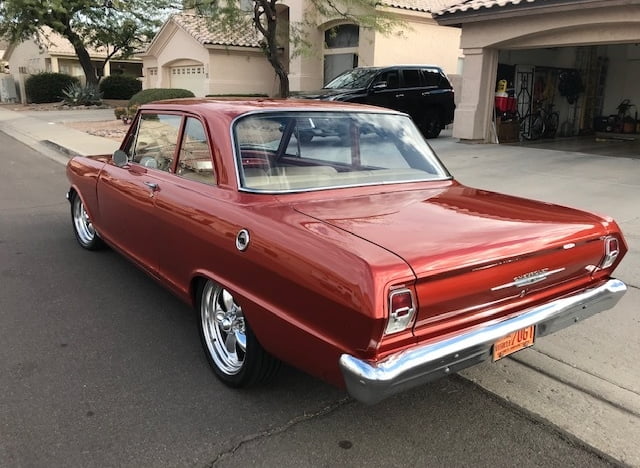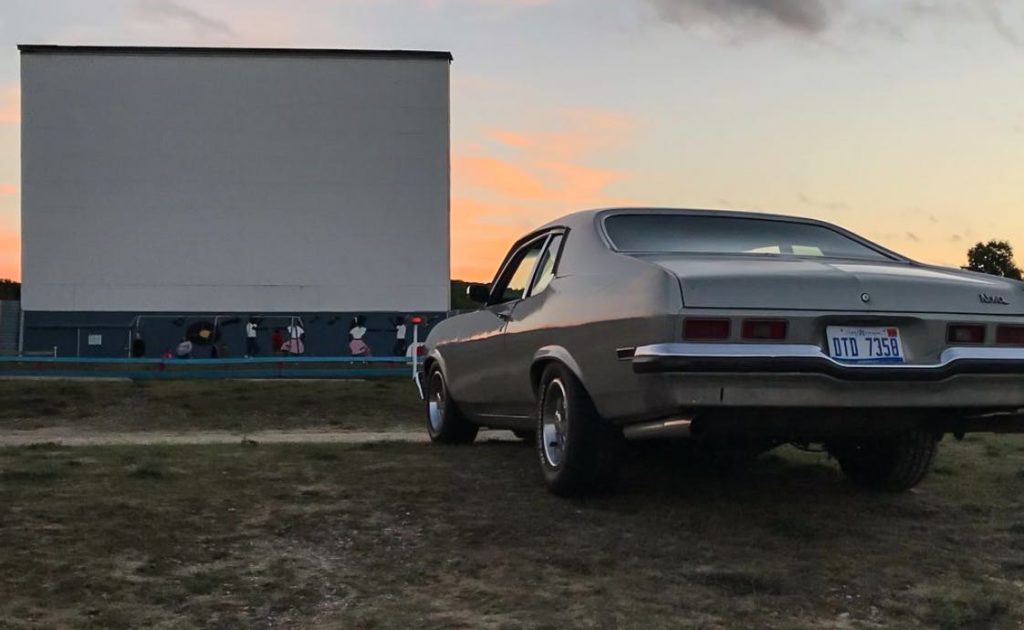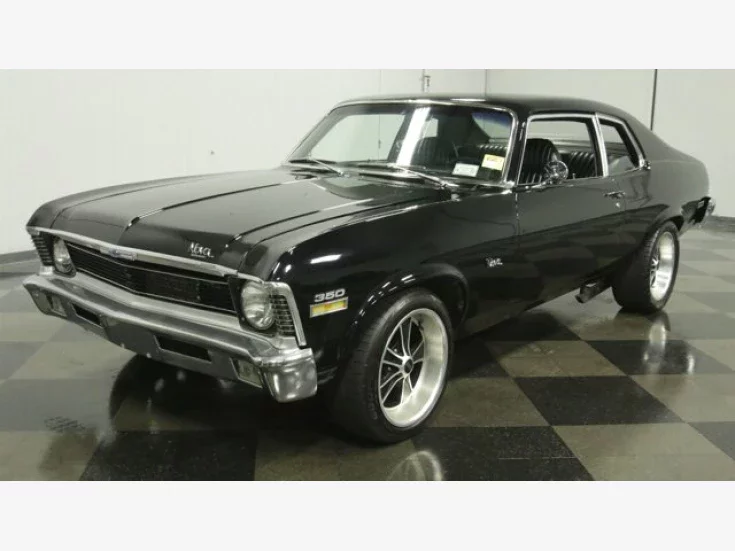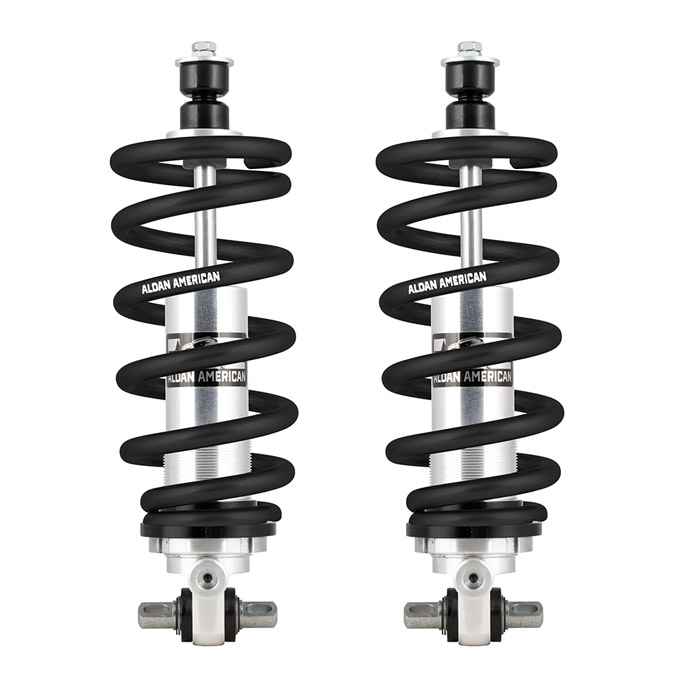1968-1974 Chevy Nova the Everyman Muscle Car
In 1960, the Chevrolet Motor Division was concerned that the groundbreaking Corvair would not catch on with compact car buyers as the division had first expected. And with Ford launching the simple, utilitarian Falcon, Chevy needed a competitor. In just 18 months, Chevy designed, developed and manufactured an entirely new model, every bit as practical as the Ford compact.

1962-1967 Chevrolet Chevy II
For the Chevy II, GM developed an all-new platform. Called the X body, it was of a semi-unibody design. The chassis was a unitized structure from the firewall back with a bolt-on front clip. The suspension was by unequal length a-arms with coil springs at the front and leaf springs at the rear. This construction provided enough flexibility in manufacturing that it became the basis of F-body Camaros and Firebirds.

Fuel Injected 327 CI, Automatic
While Chevrolet brass kicked around the Nova name, the new Chevy compact car became the Chevy II, as it started with the letter C, like other models from the division. Instead, the Nova name was appended to top-of-the-line 400 series models.
Chevy’s efforts had paid off. In 1962 the Chevy II came within 50,000 units of the well-established Ford Falcon (with the Corvair added, Chevrolet exceeded Ford’s compact car sales).
However, it was the 1960s, and a plain jane compact car wasn’t swinging enough for the times. So Chevrolet added the Z03 SS package for the model year available on Nova convertibles and Sport Coupe hardtops. Unfortunately, the early SS models were initially limited to six-cylinder engines. While the convertible was discontinued the following year, Chevrolet now offered a 195 HP 283 CID small block V8, later raised to 220 HP.
1968 Chevy II Nova
Big changes for the Nova came in 1968. After the Chevelle greatly impacted Chevy II sales, Chevrolet redesigned the Chevy II Nova in a contemporary semi-fastback style; the long hood /short deck styling was becoming increasingly popular with buyers. Chevy also trimmed the line, eliminating the convertible, station wagon, and hardtop coupe models.

Chevrolet was also transitioning the name, with Chevy II Nova as the model’s official name in 1968, though mentioned only as Nova in sales literature. For 1969, the Chevy II name would be gone.
For the period between 1968 and 1972, the Nova saw few changes. The mechanical underpinnings remained the same, and styling upgrades were pretty much limited to trim items. The most significant alterations were under the hood.
While four- and six-cylinder engines continued to be offered, in 1968, the Nova became a member of the muscle car ranks with an SS package that included a 295 HP 350 CID small block, F41 heavy-duty suspension and other performance and trim upgrades.
Chevrolet also offered two versions of its big block V8s on the SS. Both displaced 396 CID, with the L34 rated at 350 HP. The L78, topped with a Holley four-barrel carburetor on an aluminum intake manifold, an 11:1 compression ratio, an aggressive solid lifter cam, and rectangle port cylinder heads, produced 375 HP. Either could be matched to a Muncie M21 or M22 manual or a three-speed Turbo-Hydromantic automatic. Despite the power and weight of the big blocks, front disc brakes were optional on the 1968 Nova SS.
1968 also saw the farewell of the beloved 327 small block, with Chevrolet offering an L79 option on the Nova with a 325 HP version that final year of the motor’s production.
1969 Chevrolet Nova
For 1969, the SS model’s four-barrel 350 CID V8 saw a five HP increase in output. 1969 the Nova SS was now equipped with standard front disc brakes, though Positraction and faster steering were both options.

In 1969, Yenko Chevrolet of Canonsburg, PA, ordered 37 Nova Super Sports with 375 HP 396 CID V8s, which they converted to Yenko Nova S/C. The dealership installed a new 427 short block which they transformed into an L72 by cannibalizing the 396’s cylinder heads, carburetor, intake manifold and distributor, for an output of 450 HP. Performance was a 4.7 second 0-60 and a 13.2 quarter mile.
1970–1972 Chevrolet Nova
The Chevrolet Nova SS was a relative bargain for a muscle car. In 1970, Nova’s base price was $2,254 (about 18 grand today). The base-level SS350 sold for just $290.70 more.

The 1970 Nova was the final year for the SS396 (though displacement had increased to 402 CID, the engine continued to be called 396 for marketing reasons). All other engines were carried over from 1969, including the unpopular 90 HP four-cylinder, which was also in its final year.
However, by 1971 the hottest engine in the Nova was the 270 HP 350 CID L48 V8. The power drop has been attributed to GM backing off the compression ratio from 10.25:1 to 8.5:1 before the upcoming switch to unleaded gasoline.
1973-1974 Chevrolet Nova
There were several significant changes to the 1973-1974 Chevrolet Nova, making them much easier to tell apart from the nearly identical 1968-1972 models.

Federally mandated 5 MPH bumpers dominated the car’s appearance–large, chrome-plated add-on affairs that looked like something that could have been fitted to a GMC bus. The side rear windows were enlarged as well, again for regulatory reasons.
To keep buyers interested in the Nova until the revised 1975 models appeared, a rear hatch was made available, said to have been the largest ever fitted to a GM car.
1968-1974 Chevrolet Nova Today
The 1968-1974 Chevrolet Nova has become a highly-desirable car among collectors and muscle car enthusiasts. For example, Hagerty estimates the value of a 1972 Nova SS350 in Good condition at around $25,000. Compare that to an early Camaro RS or Chevelle SS.
With the extra change left in a classic Nova buyer’s pocket, they can upgrade their Chevy muscle car with more modern suspension components.
Aldan American offers owners of 1968-1974 Chevy Nova models can choose from front coilovers, rear shocks and all four-wheel suspension kits that improve handling and response. Our kits are 100% bolt-on–no cutting, drilling or welding involved for an easy installation.
With Aldan American adjustable spring perches, you can lower the ride height of your 1968-1974 Nova by up to 2.0 inches. And with our American-made single- and double-adjustable coilover shocks, with up to 180 unique combinations of settings, you can custom-tune your Nova’s suspension for wherever you drive — from street to strip to autocross.

